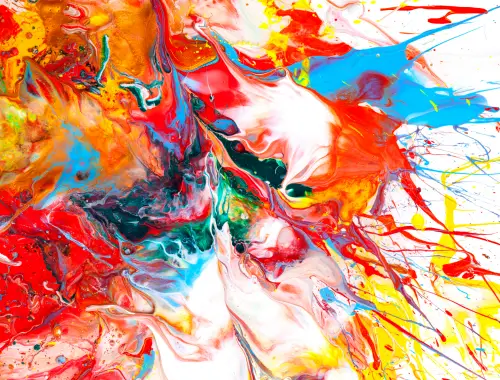Jackson Pollock is one of the most well-known artists of the 20th century, and his impact on the development of splatter painting cannot be overstated. Pollock is considered to be the father of the Abstract Expressionist movement, which is characterized by its emphasis on individuality, spontaneity, and the use of non-representational forms. In this article, we will explore the impact that Jackson Pollock had on the development of splatter painting.
Jackson Pollock’s Early Career
Jackson Pollock was born in 1912 in Cody, Wyoming, and grew up in Arizona and California. He studied at the Art Students League in New York City from 1929 to 1931 before moving to California to study with the Mexican muralist David Alfaro Siqueiros. Siqueiros was a major influence on Pollock’s early work, and he introduced Pollock to the technique of “accidental painting,” which involved pouring and dripping paint onto a canvas.
Pollock’s Early Work
Pollock’s early work was heavily influenced by the Mexican muralists and the Surrealist movement. He experimented with various techniques, including dripping and pouring paint onto the canvas, and he began to develop his signature style of abstract expressionism. In 1941, Pollock moved to New York City, where he began to work on a larger scale and to develop his signature style of drip and splatter painting.
Pollock’s Breakthrough
In 1947, Pollock had a breakthrough when he began to use his now-famous technique of dripping and splattering paint onto the canvas. He abandoned the traditional brush and palette in favor of using sticks, knives, and other tools to apply paint to the canvas. This allowed him to create intricate and highly expressive patterns, and it gave him a sense of freedom and spontaneity that he had never experienced before.
Pollock’s Technique
Pollock’s technique involved laying a canvas on the floor and pouring or dripping paint onto it from above. He would then use sticks, knives, and other tools to manipulate the paint and create intricate patterns. His technique allowed him to create works that were both highly expressive and deeply personal.
Pollock’s Legacy
Pollock’s influence on the development of splatter painting cannot be overstated. His technique of dripping and splattering paint onto the canvas inspired countless artists and helped to establish the Abstract Expressionist movement as a major force in the art world. His work challenged traditional ideas about art and paved the way for future generations of artists to explore new forms of expression.
Pollock’s work continues to be celebrated and studied today, and his legacy can be seen in the work of contemporary artists such as Damien Hirst, Banksy, and Shepard Fairey. His influence on the development of splatter painting is undeniable, and his impact on the art world will continue to be felt for generations to come.
In conclusion, Jackson Pollock’s impact on the development of splatter painting cannot be overstated. His use of dripping and splattering paint onto the canvas inspired countless artists and helped to establish the Abstract Expressionist movement as a major force in the art world. Pollock’s technique challenged traditional ideas about art and paved the way for future generations of artists to explore new forms of expression. His legacy continues to be celebrated today, and his influence on the art world will continue to be felt for generations to come.









Leave a Reply